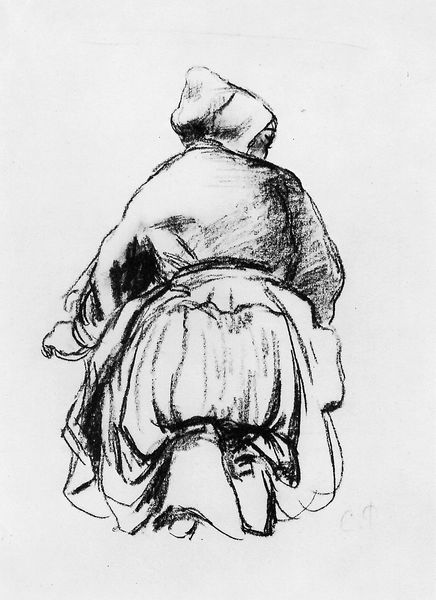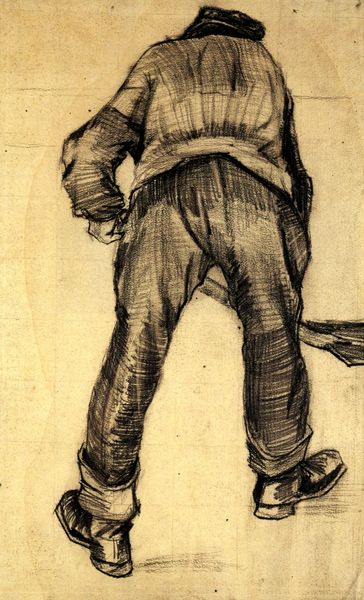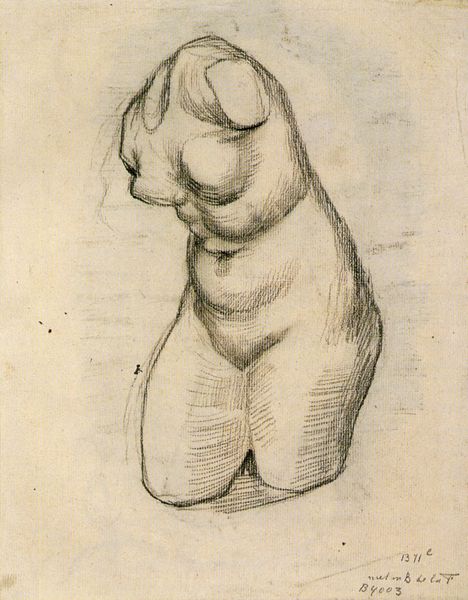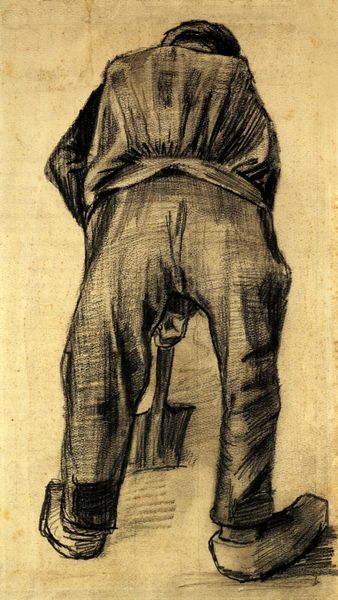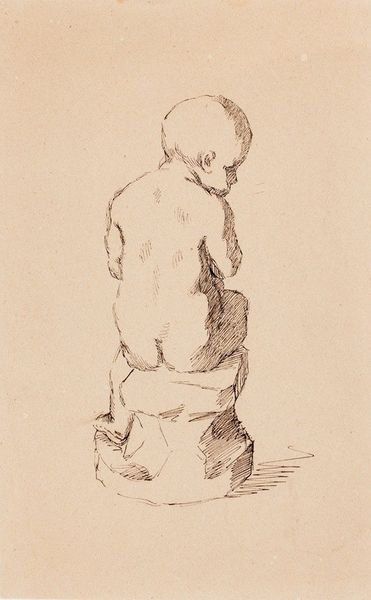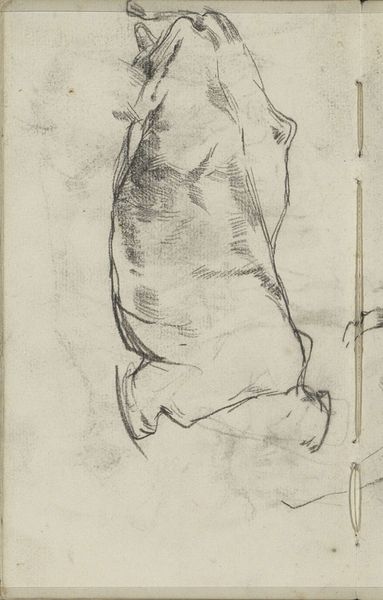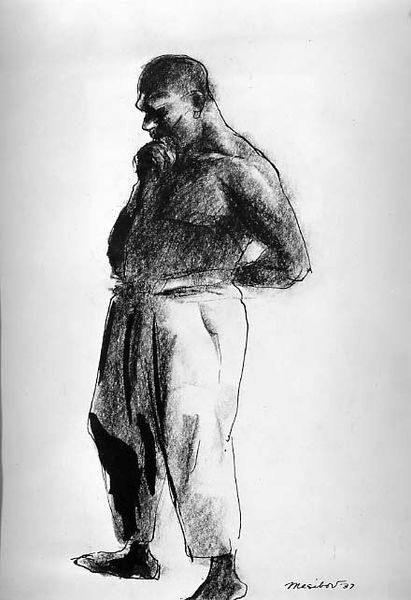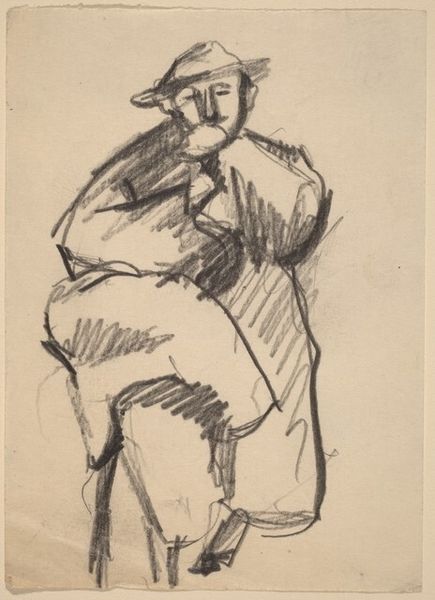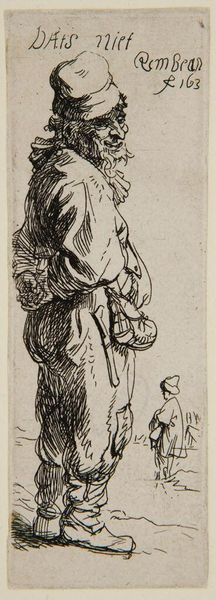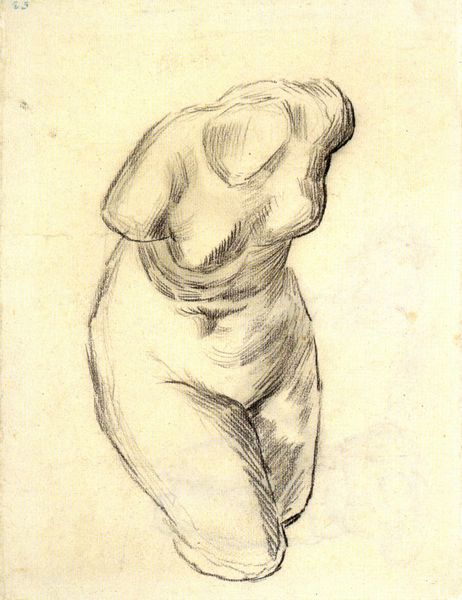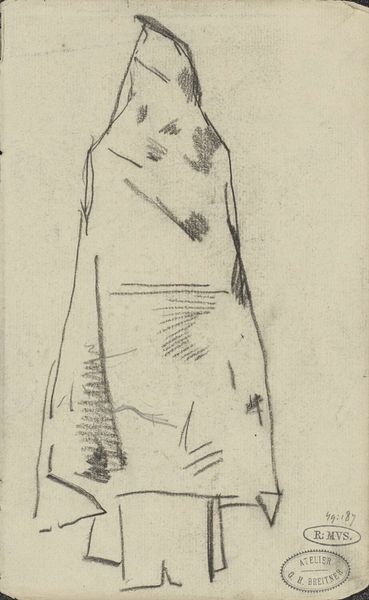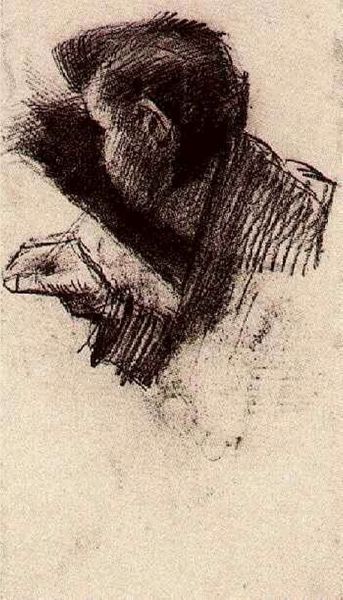
drawing, pencil, graphite
#
pencil drawn
#
drawing
#
pencil sketch
#
charcoal drawing
#
figuration
#
form
#
pencil drawing
#
sketch
#
pencil
#
line
#
graphite
#
academic-art
#
nude
#
modernism
Copyright: Public domain
This study of a Venus torso was rendered by Vincent van Gogh, likely in the 1880s, using graphite on paper. The fragmented statue is a potent symbol, evoking classical antiquity and its ideals of beauty, love, and fertility associated with the goddess Venus. But why a torso? The statue’s incompleteness speaks volumes. The human form, even in fragments, has a unique capacity to embody profound emotional states. Recall the Venus de Milo, missing arms, yet her allure remains undiminished! These dismembered forms remind us of the passage of time, the decay of civilizations, and the inevitability of change. There's a striking echo of this motif in much earlier artifacts, such as Cycladic figurines dating back to 3000 BCE. Though separated by millennia, the continued emphasis on the torso suggests a deep, underlying fascination with the core of human existence. It highlights an enduring quest for the essence of life and beauty amidst decay and loss.
Comments
No comments
Be the first to comment and join the conversation on the ultimate creative platform.

